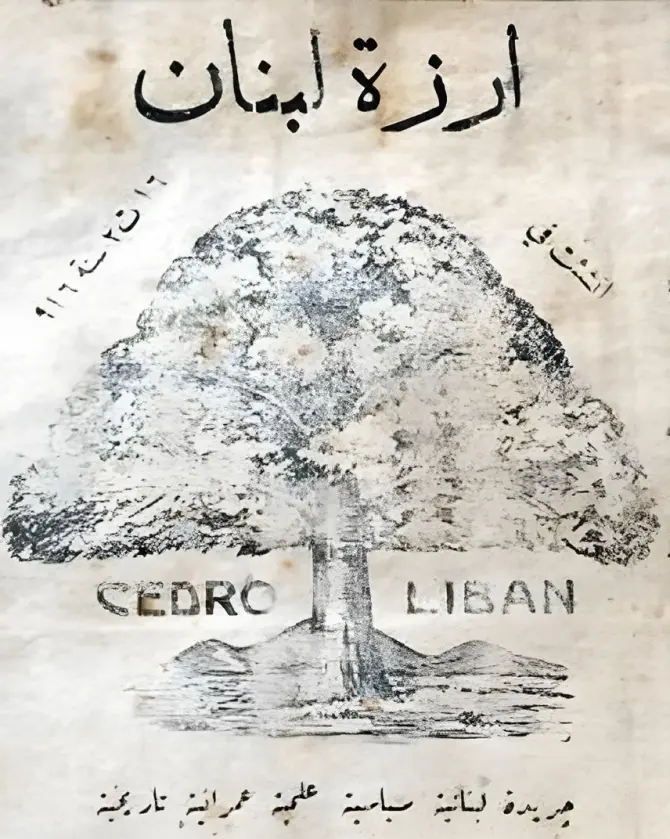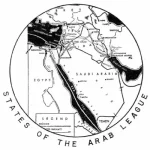I post below an opinion written by Walid Phares in 1991 and posted on Lebanon File’s electronic version published (in this case) on a university mainframe computer before the actual Internet became available. Some minor edits were made to the original text, and a couple of major ones are indicated by brackets. The foreword below is my own attempt to reinforce Phares’s main idea of 1991 but with the hindsight of events since 1991 to the present time.
Foreword (2024)
Main Objective: In the context of a search for an end of hostilities in South Lebanon, there should be an equal focus on granting the Lebanese Army full control of the entire border with Syria, and not just the border with Israel.
The article below was written in 1991 when Lebanon had just lost its last free government to Syria and Saudi Arabia with the blessing of the United States and the West. The pre-1991 Lebanon would forever disappear, including its heady days of the 1920s-1970s and its falsely named “civil” war of 1975-1990 between the Palestinians and the Lebanese, whose objective was to substitute Lebanon for the homeland the Palestinians lost to European Jewish settlers in 1948.
This may still be the objective of the current war (2024), namely to maintain tiny and otherwise inoffensive Lebanon as a lawless land where anyone in the region can act via proxies, where the ideal of the Christian Maronite community of establishing a civilized nation of coexisting Muslims and Christians could be shattered (as it stands in opposition to Jewish, Muslim and Arab nationalist fundamentalists around it), and where Palestinian and Syrian refugees have by now outnumbered the native Lebanese population, particularly threatening the very existence of the last free Christian community in the East. At the very least, both the Baathist regime in Damascus and the Zionist regime in occupied Palestine would be relieved of their obligations under international law to ensure the “right of return” of their refugee populations back to their countries.
The reason why the Stalinist Baathist Syrian regime of the Assad family never challenged Israel’s occupation and annexation of the Golan Heights (1967 and 1973) is because an agreement, hatched by War Criminal Henry Kissinger in 1974, was sealed between Syria and Israel to keep Lebanon as the only war front. Thus, Syria received an international license to begin undermining and eventually control and occupy Lebanon, which it did by triggering the 1975 war in it by backing various regional and international armed organizations, including the Palestinian Liberation Organization and the Iranian Hezbollah terrorist organization. By 1990, when the final blow was dealt to the legitimacy of the Lebanese State, Lebanon was turned into a vassal state where Syrian Baathist governance excelled in brutality and corruption. The 1989 Taef Agreement was shoved down the throat of the Lebanese with vicious violence by the United States, the Arab league led by Saudi Arabia and Egypt, and western Europe, all hoping to end the Israeli-Palestinian conflict at the expense of Lebanon. It was during the period following that 1990 American-Syrian-Saudi coup against the Lebanese government (1990s and 2000s) that the Iranian proxy terrorist Hezbollah began to grow in power right under the nose of the American-Syrian-Saudi conglomerate even as it bombed western targets, assassinated foreign dignitaries and political dissidents, kidnapped dozens of western hostages, and triggered wars with Israel in the south. Although Hezbollah was a Shiite Muslim Iranian entity hostile to the Sunni Muslim Saudis, the latter were not unhappy that the 1989 Taef Agreement had transferred the powers of the Maronite Christian president to the Sunni Muslim Prime Minister, and therefore the Lebanese Sunnis and their Saudi bosses negligently ignored the Shiite threat preferring instead to continue crushing the now defeated Christians.
In 2003, the incompetent Saudi puppet, Sunni Prime Minister Rafik Hariri was nudged by the Saudis and the Americans to change course on Syria and join the wave of the new post 9-11 Western policy, which prompted Hezbollah and Syria to assassinate him in 2005. As a result, international pressure and popular anger forced the Syrian army to evacuate Lebanon within a couple of months of the assassination. After 30 years of endorsing Syria’s brutal occupation of Lebanon, the Saudis and the Americans suddenly changed their language from the “Syrian presence” being a “factor of stability” in Lebanon to “Syrian occupation”. But it was too late. Throughout the 1980s, 1990s and into 2005 Hezbollah had been building its military arsenal and growing its strength and influence, thanks in large part to continuous Syrian support through the porous Syrian-Lebanese border with the smuggling of goods, weapons and mercenaries, and to the backing of local traitors like Michel Aoun and Gebran Bassil’s Free Patriotic Movement (FPM) that signed a friendship agreement with Hezbollah in 2006.
The gist of the Phares paper below is to point out that a far greater threat to Lebanon comes from Syria than from any other country in the region. If anything, Syria should be considered Lebanon’s enemy number one. For those who might point to Israel’s current (2024) savagery against Lebanese targets, I will remind them that between 1975 and 1990, Syria did exactly the same thing in Lebanon that Israel is doing right now: Killings, assassinations, bombings, shelling of cities, kidnappings, destruction of infrastructure, etc. Syria’s Assad has committed worse atrocities against the Lebanese people between 1975 and 2005, then again against his own people since 2011, than Israel is doing in Gaza.
But while Israel is targeting the Iranian Shiite Muslim terrorist Hezbollah, Syria’s strategic target in Lebanon has always been the country’s Christian community, particularly the Maronites. And this for two reasons:
1- the Arab Nationalist ideology of Baathist Syria does not recognize Lebanon as an independent nation and ever since independence (1943 for Lebanon, and 1946 for Syria), the Baath Party has been obsessed with denying any specificity to the Lebanese nation and strives to unify, by force if necessary, all Arab countries into one state based on the single criterion of the Arabic language; and
2- The Maronite Christians of Lebanon are the founders of the modern country from all the way back at least to the 1840-1860 period and continue to entrench their historic roots into Lebanon’s Phoenician civilization (1200 BC – ~1000 AD), and not to the more recent Arab Muslim conquest of 638 AD. As Christianized Phoenicians, the Maronite Catholic Lebanese reject the Arab occupation’s imposition of the Arabic language and the Muslim religion. The parallels between Lebanon and Ireland are stunning: As Christianized Celts, the Roman Catholic Irish reject the English occupation’s imposition of the English language and the Protestant religion.
With old Lebanon agonizing before our eyes, which kind of Lebanon will emerge in the not-so-distant future is a huge unknown. The fact remains, though, that as long as the Arab nationalist Baathist regime remains in power in Damascus, Lebanon will never know peace. Hence the decision to publish this piece by Walid Phares from 1991 which gives a perspective on the mindset at the time when Lebanon’s democratic system had just been annihilated by Syria and its American and Saudi allies, and the country entered a dark tunnel from which it never emerged. Today’s events are the direct consequences of 1970s-1990s American-Saudi treachery, as the country might still succumb as the payola for another dirty deal involving Iran and Israel.
Bottom line: Syria remains the greatest existential threat to Lebanon’s existence. Efforts to end the current war between Hezbollah and Israel seem to focus exclusively on the Lebanon-Israel border, while ignoring the source of all instability and criminality coming across the non-delineated and lawless border between Lebanon and Syria. Genuine efforts to regulate and pacify Lebanon’s borders with Israel should not be divorced from efforts to finally delineate and regulate the Lebanese-Syrian border: The Lebanese army must be in full control of all the borders, with the backing of international forces where necessary.
==============================================================
Lebanon File
SYRIA’S SECRET AGENDA IN LEBANON
WALID PHARES
08-MAY-1991
[With some modifications and additions indicated by bracketed items]
Certain Western officials continue to argue that Syria acted with altruistic motives during its progressively bolder moves to control Lebanon. However, a clarification is needed for Americans on the true Syrian objectives. These individuals, in turn, can bear testimony to these facts to their respective political representatives and others who are in a position to influence American public opinion.
Getting the “facts” out has not been and will not be easy. How many times have the Lebanese run into a political brick wall when trying to convince policy makers in Western capitals of Syria’s true motive to annex Lebanon, particularly the US State Department whose 16-year unmodified position appears to be pre-recorded on an answering machine: “Syria is a stabilizing factor in Lebanon …”
It is incumbent upon those who care about Lebanon’s future to convince others that Syria is as much a “stabilizing factor” in Lebanon as Iraq was in Kuwait. To do so, a solid understanding of Lebanese-Syrian relations is needed.
Convincing the US administration that Damascus is as much of a “brotherly” presence in Beirut as Baghdad was in Kuwait City will be difficult, particularly since the American administration has been under the erroneous assumption resulting in the violent implementation of the Taef Agreement last October.
A fast playback of Syrian involvement in Lebanon is enlightening:
Before October 13, 1990
Since both Lebanon’s and Syria’s independence in 1943, Damascus has never recognized the Lebanese political entity. On many occasions, the various Syrian governments closed the only borders that Lebanon had with the Middle East hinterland, except the Lebanese-Israeli border (which is closed). Like Iraq’s claim of Kuwait, Syria was continuously calling for the “return” of Lebanon “into the arms of its elder sister Syria”.
In 1958, the main support for the pro-Nasser* factions in Lebanon came through the Syrian borders resulting in an internal destabilization which caused the US to send its troops to that country for the first time.
Between 1969 and 1970, the first infiltrations of armed PLO (Palestine Liberation Organization] units into Lebanon were totally planned and accomplished with the coordination of Syrian intelligence and logistics.
In 1973, The Syrian-controlled Palestinians of Al-Saaika** organization launched waves of commando attacks against the Lebanese Army.
In 1975, Syria directly supported the PLO and local militias in Lebanon in their clashes against free Lebanese armed organizations. This Syrian support was the main reason for the collapse of the central Lebanese government. Most of the massacres against the Lebanese civilian population were carried out after military victories by these Syrian-backed units (e.g. Damour on January 20, 1976; Tel Abbass and Beit Mellat, 1976).
Seizing upon the destabilization which it had helped create, the Syrian army entered Lebanon in June 1976. In September of that same year, Syria’s dictator Hafez Assad declared: “We took the decision to intervene in Lebanon for the sake of the Lebanese people and the Palestinian resistance…” A few weeks later in November the Arab League “adopted” the Syrian presence in Lebanon as part of an Arab “peacekeeping force” in which the combined participation of non-Syrian troops never exceeded 10% of the entire force.
[Under Syrian sponsorship, a seditious Sunni Muslim lieutenant in the Lebanese army, one Ahmad Khatib, broke away from the army with entire brigades to form the so-called Arab Army of Lebanon which then proceeded to attack Lebanese army barracks across the country, particularly in the south of the country. Those Lebanese army barracks along the border (Marjeyoun, Khiam, etc.) that withstood Khatib’s assaults were completely cut off from the central government in Beirut. Desperate for help, the Lebanese community in the area became the nucleus of what was later to become the mostly Christian “border strip” that opened the border with Israel for food, medicine, schooling, etc.]
In 1978, after months of excessive bellicose involvement in the domestic politics of the country, the Syrian army found itself engaged in a large-scale war with the Lebanese Resistance [an aggregate of loyalist Christian militias defending the state whose fragmented army could not defend the country]. Though the Syrian units withdrew from East Beirut, they kept 70% of Lebanese territory under their occupation. On October 6, 1978, the UN Security Council passed resolution 436 demanding that the Syrian army end its military operations and stop its shelling of the Lebanese civilian population.
Between 1979 and 1982, the non-stop conflict continued between the Syrian forces and the remaining free areas of the country. In 1981, the city of Zahle in the Bekaa Valley was besieged with heavy shelling by Assad’s Syrian troops. In 1982, Israel invaded Lebanon and fought PLO and Syrian forces. During that time, US envoy Philip Habib went to Beirut and succeeded in achieving a ceasefire.
Between 1983 and 1985, a series of terrorist attacks took place against US and French forces that were part of the Multi-National Force in Beirut. The most infamous was the twin and simultaneous bombings of the US Marine barracks (241 killed) and the French paratrooper headquarter (58 killed). Along with the kidnapping of dozens of western hostages and the bombings of French and US embassies, Syria succeeded in ending Western support to the Lebanese Central government. Meanwhile, the Israelis had dismantled PLO bases in West Beirut.
Having expelled the West from Lebanon through terrorism, Syria proceeded to send its army into all of Beirut. It also provided armed mercenaries and artillery support to the Muslim militias fighting Lebanese army units in the Shouf Mountains and the southern suburb of Beirut between 1983 and 1984.
Were it not for Syria’s “tremendous efforts” after 1982, Lebanon would have regained its freedom and full territorial control from the Syrian occupation with the assistance of the Multi-National Force (MNF) comprising US, British, Italian and French forces.
Between 1986 and 1989, like professional chess players, Syrian regime leaders played their game and carried on with their long-term “business” of completely absorbing Lebanon. They exerted pressure on the Lebanese central government while blackmailing the West with the western hostages Syria held through its Hezbollah proxy. Syria also monitored the struggle brewing within the unoccupied, free areas of the country.
In 1988, departing president Amin Gemayel appointed the Commander of the Lebanese Army, General Michel Aoun, as Prime Minister of an interim government because the Lebanese Parliament refused the American dictate of electing a Syrian puppet for president. With the backing of the Americans and the Saudis, Assad then made the “check” move in his game.
In 1989, after a seven-month barbaric artillery campaign by Syria against the Free Area where the legitimate government had hunkered down, all with the blessing of the US State Department, Saudi Arabia’s collaboration, and the agreement of the feudal warlords, the Taef Agreement was signed in Taef, Saudi Arabia. This agreement, which was a way to end the war in the mind of American policymakers, gave Syria a legal basis to occupy and obliterate all Lebanese sovereignty.
In 1990, the remaining army units still loyal to the legal and legitimate government of Prime Minister Aoun and defending the last stronghold of a free Lebanon, became the target of the Syrian army. The “election” of a puppet president per the Taef Agreement erupted into clashes between Syrian-infiltrated pro-Taef militias and the Syrian army on one hand, and the legitimate Lebanese army units on the other.
On October 13, 1990 at 7:05 am, seven Syrian air force jets – benefiting from a unique green light from the Israelis who had a monopoly over Lebanese airspace – backed by 1,000 artillery units and 30,000 Syrian soldiers launched a final assault on the government seat in Baabda and the entire free zone and crushed the small poorly-armed resistance led by Prime Minister Aoun.
After October 13, 1990
By 4:00 pm, Hafez Assad was in control of 90% of Lebanese territory. All areas of the country north of the town of Jezzine and the southern Israeli-controlled “Security Zone” fell under direct occupation by Syria, its puppets and proxies.
With the fall of the last free zone in the country, a new era has begun in Lebanon. For the first time in Lebanon’s history, the Lebanese central authorities are completely under Syrian control. All political decisions, from government policies to a name change of a small street in the capital, require Syrian clearance. Moreover, the “leadership” of Lebanon hold their meetings in Damascus more so than in Beirut. More than ever before, national decisions, identity and destiny appear to be in Syrian hands.
Besides the 90% of the national territory that it controls, Syria is keeping most of the militias under its command. Since October 13, the remaining Lebanese army units are under close scrutiny by Syrian officers. Even the formerly anti-Syrian leader of the Lebanese Forces militia, Samir Geagea, is regularly flirting with Syrian intelligence: He chose to support the Taef Agreement to assist him in his efforts to defeat the constitutional government of Prime Minister General Michel Aoun.
Politically, all official Lebanese administrations are under control by the Syrians. Not surprisingly, Lebanese foreign affairs – like other ministries – have become an extension of Syria’s Foreign Affairs Ministry.
Perhaps the greatest danger facing the country is the change permeating Lebanon’s cultural and social consciousness: The slow, but firm, Syrianization and Arabization of Lebanese education. Even after periods of domination by the Mamelukes or the Ottomans, the Lebanese were always able to spring back because of their deep-rooted collective consciousness. Now, however, the obliteration of this identity through the “new education” is a mortal blow to the younger generations.
Slowly but persistently, Hafez Assad has gone even further to ensure his objectives. To make sure that all Lebanese factions cooperate with their new master, Assad is wisely operating through “Lebanese” actors after the elimination of the effective resistance: disbanding the Lebanese army, neutralization of General Aoun’s government, elimination of Dany Chamoun’s Lebanese Front, repression of the huge popular movement. And last, but not least, coopting the Lebanese Forces Party’s leadership led by Geagea.
Despite this de facto situation created by the Syrians themselves, many will still preach that Syria is a factor of stability in Lebanon – a bad joke for the Lebanese, but an unfortunate and unfounded belief in the minds of policymakers in the West.
The current Syrian strategy of erasing national history from Lebanese educational textbooks is a much more dangerous policy than that of T-72 tanks rolling into the heart of the previously Free Areas of Lebanon.
Americans MUST speak out NOW against Syrian hegemony in Lebanon, particularly against Syria’s efforts to control not only the raw materials and politics of the country, but also the hearts and minds of the people.
Let us remember that, half a century ago, western powers let an aggressor like Hitler have his way in return for his pledge of good behavior. How many lives were lost from Europe and from America because of diplomatic miscalculations and wrong assessments?
————————
* Gamal Abdul Nasser, the Egyptian leader from 1952 to 1970, tried to impose a Pan Arab unification including mainly Egypt, Syria, Yemen and Lebanon.
** The Syrians established their own “Palestinian movement” from within the PLO. It was called Saaika, Arabic for “lightening”.
————————
Date: Wed, 8 May 1991 23:24:52 EDT












